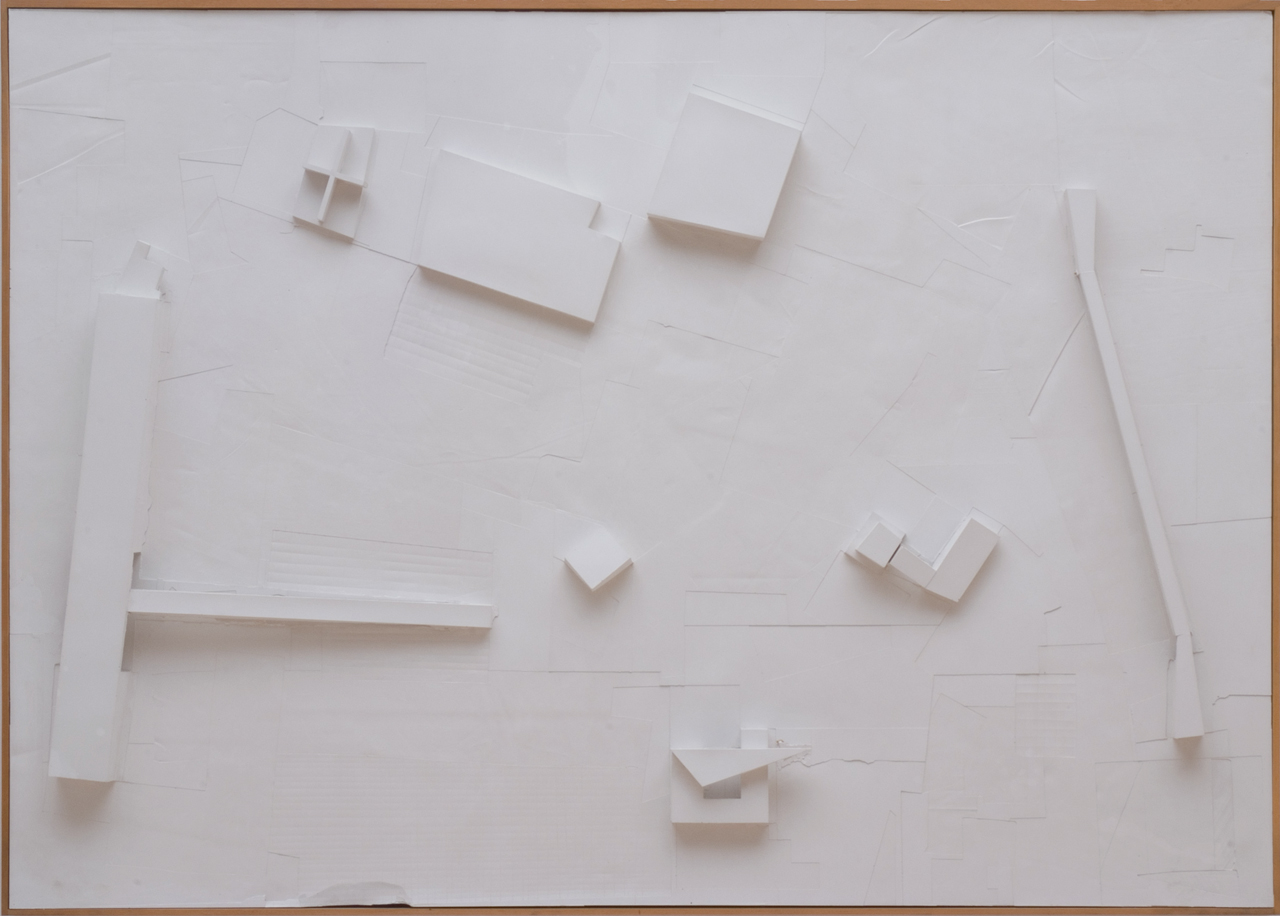At the end of the sixties, György Jovánovics made cheap, non-timeless plaster, used as a sculptural aid, the raw material of his art, thus demonstrating his opposition to power and official sculpture. The relief 16.04.99, whose title indicates the date of its creation, belongs to a series of plaster reliefs, the so-called “jovanographs”, made from the early 1980s. Jovánovics constructed a negative mould from industrial plastic film and paper to produce these reliefs, which take the form of a panel painting, have a frontal view but protrude into space. In the case of 16.04.99, a total of eight angular shapes of varying shapes and sizes emerge from the layered, finely structured base, which the viewer can associate with buildings and bridges seen from above. The shadows on the spot-lit surface give the uniform white object a spatiality, highlighting the subtle structure of the base and the composition of geometric shapes, which recalls the traditions of Hungarian and international constructivism. Some ten years later, György Jovánovics was commissioned by the Museum of Fine Arts to produce a version of the 1999 relief again. The title of the work with minor modifications is 17.01.08., i.e. the new version was made on 17 January 2008.
Krisztina Szipőcs

